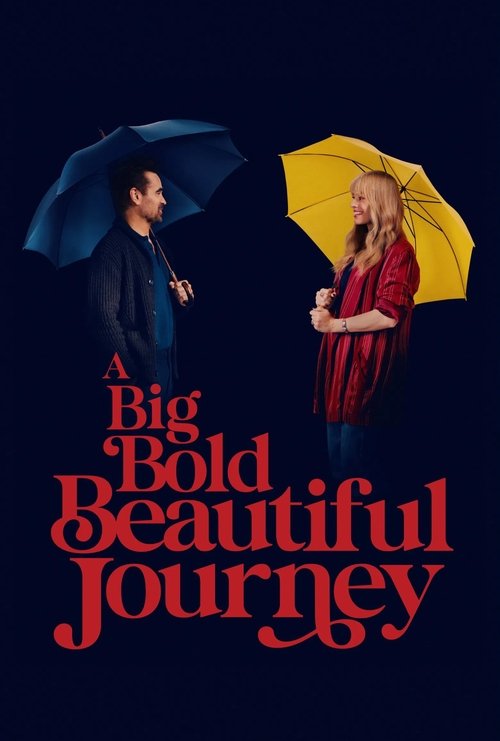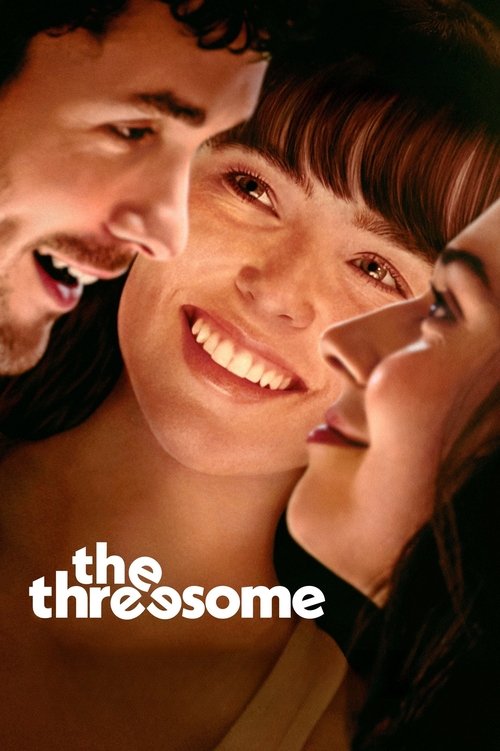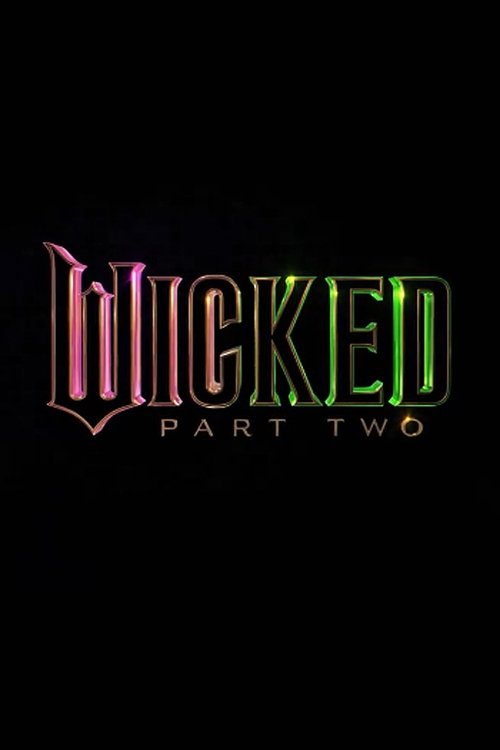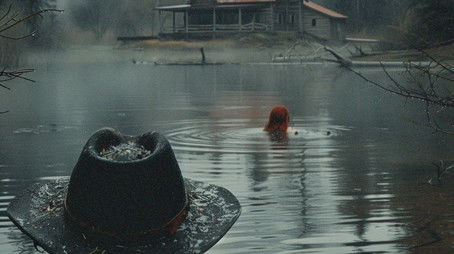
Ask Your Own Question
What is the plot?
The film opens with a man sitting on the edge of a bed in a small apartment, flicking through static on the television while a woman enters the room. She approaches him with a look of cold deliberation and, without warning, plunges a knife into his abdomen, then drags boiling water across his torso and slaps him repeatedly. As he slides to the floor, blood spreading beneath him, he whispers a single question: why? She answers that she has long hated him and had planned to kill him gradually by slowly dosing his food, but that plan collapsed when external events hurried her timetable. The camera cranes to the window where violent storms and buildings collapse; outside, the world is unraveling into an apocalyptic chaos. With the skyline burning and debris falling, she finishes the killing by tearing at his throat until he dies.
The next piece shifts to a cramped Mexican household where a small girl hides beneath a blanket and watches her older cousin try to resume sex with his girlfriend. He tucks the child back into bed and, seeing a comic about an abominable snowman on the bedside table, teases that the monster is real. His girlfriend, cruel and cavalier, amplifies the lie: the abominable snowman, she asserts, is empowered by the government to steal children's hearts if they are awake past eight o'clock. The child trembles and pulls the covers up to her chin while the cousins proceed. Later that night a trash collector, shown as a psychotic figure stalking the darkened house, slams through the doorway and attacks. He tears into the girlfriend, ripping her chest open and extracting her heart by hand. The cousin is butchered as well; when the killer moves toward the child's room he looks at the clock, sees that it is past eight, and then notices the girl curled under the blankets. He walks past her and departs, leaving the sleeping child alive while the adults lie torn and lifeless.
A suburban lawn provides the setting for the next vignette. A man notices a scattering of blood and bits of clothing among the grass. That night he hears a strange sound within his house and cannot sleep. The following morning he follows a trail through a hedge and finds a ragged hole in the garden shrubs. He steps through and discovers that he has slipped back in time to the previous evening. He watches a version of himself move through the house, retracing activities that lead to the very noise he heard. Panic drives him into the backyard where another version of himself materializes behind him and wraps barbed wire around his neck, pulling until the wire slices through flesh and bone. As the living man staggers, he recognizes that he will become the corpse he saw the night before; he drags the limp body to the hose and sprays the blood away, arranging the scene so that when his past self returns he will find the same bloody tableau. The cycle resumes: the man has caused his own death and, by cleaning the remains, ensures the loop repeats.
An underground fight club supplies the next scene's brutality. A muscular boxer steps into a ring and, to the crowd's jeers, faces down a barking, heavily muscled dog controlled by a savage trainer. The man and the animal engage in a feral contest of strikes and bites. The dog gains control, clamps onto the fighter's throat and begins to tear, jaws working to rend flesh. The boxer's voice catches as he calls out the dog's name, and a battered poster in the locker room reveals that the dog was stolen from this very man. At the sound of its true master's name the dog releases its grip. The boxer and the dog, reunited, turn on the trainer; together they maul him to death, tearing and ripping until the trainer's body is inert on the floor.
In a single-room apartment a man battles a spider he cannot crush. He swats, stomps, sprays aerosol, but the small arachnid eludes him and later creeps down to rest on the ceiling above his bed. Over the coming days the man begins to develop red welts and an unrelenting tinnitus; he visits no doctor. When he finally locates the spider again he mercilessly kills it, satisfying himself that the threat is gone. Hours later the ringing in his ears grows louder until he collapses to the floor; small black spiders begin to wriggle from his ear canals, hatching from eggs laid by the spider during the night. They crawl across his face and into his mouth as he convulses and dies.
A high school classroom in Japan becomes the locus of a strange, intimate story. A girl, aware of her tendency to break winds, confesses to an older female teacher that she admires and loves her. The city outside becomes shrouded in a green, toxic fog the townsfolk call the "fart of god," a lethal cloud that kills anyone who breathes it. The teacher and student run into a shelter, knowing the mist will invade the building sooner or later. The girl begs the teacher to end her life with something gentler than the fog; she asks to be killed by the teacher's farts, because she believes this would be less shameful. The teacher, moved by the plea and by their mutual affection, presses her face to the girl's and forces repeated expulsions until the student suffocates and dies. Later the film offers a brief, dreamlike image of the two together, smiling and unashamed in an otherworldly company.
The picture then adopts a first-person perspective at a windswept shoreline. A person opens the trunk of their car, straps a heavy canvas bag of bricks to their back and lugs a surfboard to the water. Paddling out alone, they lie prone on the board until a cold undertow pulls them under. The added weight of the stones in the bag drags them down; the sea closes over their face and they drown, the bricks dragging the body deep into the surf.
A sequence on an alien world inhabited by anthropomorphic mammals follows. A dog who flies as a fighter pilot watches a fox dancer perform on a platform. When he draws close the fox reveals herself as an operative of his wartime enemies and triggers a mechanism that locks him into a vat called a hydro-electric diffuser through which an electrified current can be run. The dog, trapped and convulsing as current seeks to corrode him, recalls a phrase that steels his will. He finds the release catch, ejects himself and, with one strong shove, pushes the fox into the diffuser in her own trap. He lights a cigar and stands as the fox's skin sloughs under the electric shocks and her skull ruptures from the force of the current and the ensuing explosion.
A dimly lit bathroom contains a woman bound handcuffed in a bathtub. She speaks aloud in fragmented sentences while a man watches her with an expression that mixes sorrow and resolve. He draws up a syringe, pierces her arm with a clear fluid and steps away as the poison takes hold. Alone and panicked, the woman claws at her arms and begins to peel at her skin with her fingernails, tearing away layers of flesh as the toxin spreads through her system. Her scratching becomes frantic until blisters burst and her body stills; she dies immersed in the tub as the man leaves the room and shuts the door.
A single long take places two samurai in a small room. One of the men performs seppuku, slicing into his belly while contorting his face into a succession of strange, anguished expressions. The other samurai watches in disbelief and, when the wounded man begs for release, draws his blade and severs the head, ending the agony. After the deed is done the surviving samurai breaks into a laugh, a sound that echoes in the empty place where the other man's life has ended.
In a short animated party sequence a woman slips into a restroom to defecate. One of the pieces of feces refuses to flush and commences to move, animated and obstinate. The woman, frantic at the thought of being discovered, wrestles with the living excrement and tries to force it down the toilet. The standoff tumbles into a grotesque escalation: the feces moves back into her, travels too far and emerges from her mouth. The reverse transit kills her by asphyxiation and internal trauma. The bathroom door bursts open and a group of partygoers laugh at the scene as they assume she has merely made a humiliating mistake.
A grim, mechanical game is staged to a group of wealthy masked spectators. Two men wake strapped to chairs, watched by technicians and women who will stimulate them as part of a contest: the men must masturbate to remain alive. The loser of each round is impaled on a spike while the winner survives to face a more extreme stimulus the next time. The man who repeatedly wins becomes adept at diverting his attention and pulling ahead, aided secretly by the woman who manages the sessions, who offers him herself to help. One day the impaling apparatus malfunctions and the woman overseeing the trials is pierced and killed by the spike. The shock unbalances the proceedings: the winning man collapses in the aftermath and loses his edge. When he awakens a new woman rides him, and he sees two men bound nearby, masturbating to his motion and the sight of the woman; he realizes he has become the stimulus. As the rhythm intensifies the woman on top of him whips out a chainsaw and revs it; she brings the blade down onto his torso, shredding him into a bloody ruin as the other captives are forced to continue their motions, watching and touching as the machine of mutilation consumes him.
A frantic domestic scene follows a woman urgently searching through rooms for a plunger. She fumbles through drawers and cabinets, hand slamming into bathroom fixtures, until she finally locates the tool. The camera pulls back to expose the reason for her panic: she has suffered a miscarriage and biological matter clogs the toilet. She works to clear the clog but the short ends on her frantic, shaking hands and the ruined bathroom.
A young man buys a parrot as a romantic gesture and trains it to recite the words of a marriage proposal. He presents the bird to his girlfriend, and when the parrot repeats the proposal she accepts and is delighted. The parrot continues, however, and begins to mimic the strangled, intimate noises the boyfriend made during a recent affair. The recitation enrages the girlfriend; in a fit of jealous fury she kills the boyfriend. The film shows her striking him down, the blow delivered in a domestic room; the manner of his death is implied in the sudden collapse of his body and the stillness that follows, while the parrot flutters on its perch.
A woman working as a prostitute saves cash to support her family, resisting the repeated advances of one wealthy client. Her partner, whom she loves and trusts, steals the savings and the children are left without support. Desperate, she contacts the wealthy man and agrees to meet in an empty warehouse. He hooks up a camera and lights and forces her, under threat of blackmail, to step on and crush small live animals with her stiletto heels while he records the act for his sadistic pleasure. She complies, repeatedly stamping the creatures to death to earn the money to feed her family. The final images show her children later in another home, playing and safe, unaware of the recorded cruelty their mother endured to provide for them.
A pair of filmmakers assigned the letter Q complain about their placement in the anthology and decide to shock by committing a real killing themselves. They drive to a desert with a duck in a box and a hired sound man. One of the filmmakers aims a rifle at the bird, then loses his nerve. The other attempts to take the weapon, fumbling with the safety. In their scuffle the gun discharges, the bullet striking the director in the chest. The director, shot, involuntarily fires his own weapon as he falls, the round striking the writer who had been adjusting the rifle, killing him instantly. The sound man flees, leaving both of his employers dead on the sand while the duck quacks from its box, unharmed.
A clinical laboratory frames a grotesque scene: surgeons open a bound man and excise strips of his flesh, converting the shreds into lengths of celluloid. The captors project the strips as film and treat the man as raw material. He crawls through blood and bandages, mustering a last reserve of energy, and rigs a handful of his cut flesh into improvised bullets. In a desperate counterattack he fires the grotesque ammunition into his captors, each hit opening arterial spray and dropping executioners to the floor. After slaughtering those who tortured him he collapses from blood loss, his body settling onto the floor as the camera lingers on the wound that will end him.
A high-speed pursuit opens in a nightmarked industrial district. A woman shoves another into the trunk of her car and speeds through darkened streets with a hooded motorcyclist dogging their tail. She jacks a flame thrower and blasts at the biker, setting him briefly alight, then activates a surge of nitrous and tears away. The bike reappears in the rear-view; she speeds up again, but the car runs low on gasoline and the biker closes in. He demands the woman hand over the captive, but she offers instead the woman in her trunk. The motorcyclist refuses--he tells the driver that the captive is not yet due and instead introduces himself as Death, an unblinking psychopomp who is impressed by the chase. The driver accepts her fate, reaches out and takes Death's hand, and they vanish. The sequence then flips back to reality: the driver and the captive were addicts; the captive wakes to find her friend slumped and unresponsive on the couch, passed out from an overdose. She watches, indifferent, and then shoots up again herself, dissolving back into the dream of the chase.
A stop-motion segment follows a frightened little boy and his parents attempting to teach him to use the toilet. They hang a water tank above the bowl and show him how to pull the chain. The child wakes from a nightmare about the toilet transforming into a monstrous, gaping mouth that tears his parents aside and eats them. Shaking, he resolves to face his fear; his father watches from the doorway with pride as the boy climbs onto the seat. The tank, however, is poorly mounted; suddenly the reservoir detaches, falls free of its fittings and comes crashing down, crushing the child's skull beneath its weight.
A first-person assault presents a captured figure with supernatural strength who fights a line of pursuers and rips through them. His captors eventually overpower him, pinning him to the ground with effort. One man removes a prosthetic or reveals long fangs from the captive's mouth, and a priest steps forward with a stake, driving it through the captive's heart. As blood pours from the wound, another man positions himself and severs the captive's head, beheading him to ensure he cannot return. After the execution a final participant promises the dead man that his family will be kept ignorant of the truth, and they carry away the body.
A futuristic dystopia is depicted in which reproduction is strictly regulated by a state that only grants maternity to women who perform service as officers hunting illegal parents. A female officer receives word that she has been cleared to bear a child because of her service. The news is followed by a bureaucrat's laugh; he reveals she has been infertile all along and the permission meant nothing. The officer is sent on an assignment to raid a hidden household where a child has been born without authorization. When they arrive they meet parents who possess a newborn with telepathic, reality-altering powers. The other officers begin to slaughter the parents to secure the infant's genetics at the order of the officer's superior. The baby, cornered and frightened, unleashes lethal psychic force that detonates and kills many of the officers around it. The superior, enraged, orders the female officer to execute the child and, when she refuses, fires a bullet that wounds her. One of the dying parents, leaning over their child, speaks to the officer and declares the baby a prophet who must be raised to save the world; he begs her to take the child. The officer, injured but alive, consents. At that moment the infant directs its nascent power at the superior and causes his skull to erupt, exploding his head in a spray of blood and bone.
A meta-argument about how to handle the letter W collapses into chaos as the filmmakers' discussion is interrupted by a rash of intrusions. Characters emblazoned with the letter W--warriors in armor, robed warlocks, motorized killer wheelchairs, a parade of walruses on land, and grotesque clowns--manifest on the set. They converge on the crew and the production office; the camera follows in close as the visitors rend throats, lance bodies, overturn equipment and smash skulls. The director, writers and crew are picked off one after another in escalating and explicit attacks; cables are used as garrotes, prosthetic limbs and stage props become weapons, and bodies pile in rooms once filled with paperwork. The sequence ends with an empty, wrecked studio floor and the letter W painted on a crumpled notepad.
A woman who has absorbed endless ridicule about her weight endures a montage of insults and advertisements for diet products before she reaches a breaking point. Alone in her bathroom she slices through the soft tissue of her body with a scalpel, literally carving away layers of fat and skin while she poses before a mirror. She strips herself down to a raw outline of bone and muscle, standing as if modeling, but the bleeding exceeds her ability to staunch it. Her breathing becomes shallow, she collapses to the tiled floor and dies from hemorrhage as blood expands across the linoleum.
An older janitor lingers at the edge of a youth athletic field, licking sweat from the bleachers where children have sat. A young boy finds him and, with a mounted deer head in view on the back wall of a hunting cabin, picks up a pair of antlers. A flashback reveals that the janitor once took the child on a hunting trip, shot a deer and decapitated it while the boy watched; he later exposed himself to the frightened child. Now the boy, grown cold and driven by retribution, plunges the antler tines into the man's chest, driving them through his body until he dies. The boy then severs the man's head, placing it on the bleachers, and lifts his shirt to expose himself to the severed skull in a grotesque mirror of the janitor's prior abuse.
The film concludes with a surreal, hyperactive montage of images that retrace and parody modern Japanese culture--television game shows, animated sexuality, gargantuan monsters and slices of sushi--exaggerated into a landscape of excess. Characters from the preceding vignettes, stylized avatars and caricatures gather and escalate into utter collapse as fireworks of destruction rain down. Buildings crumble, creatures explode, and faces dissolve; the final beats are an orchestration of annihilation as every figure on screen is consumed, vaporized or blasted into oblivion. The camera pulls back until there is nothing left but a silent, empty frame, ending on a last visual of a world emptied of life.
What is the ending?
The ending of The History of Sound (2025) shows Lionel and David in their later years, reflecting on their past journey of recording folk songs and their complex relationship. The film closes on a note of bittersweet memory and unresolved emotions, with older Lionel looking back on their shared history and the impact of their love and work.
Expanded narrative of the ending scene by scene:
The final sequence opens with an older Lionel (played by Chris Cooper) sitting quietly in a dimly lit room, surrounded by the archival recordings and memorabilia from his and David's travels in rural Maine. The camera lingers on his face, marked by time and introspection, as he listens to a faint folk melody on an old phonograph. This moment is heavy with nostalgia and a sense of loss.
The scene shifts to a flashback of Lionel and David (Paul Mescal and Josh O'Connor) in the summer of 1920, traveling through the backwaters of Maine. They are seen carefully setting up recording equipment in humble homes, capturing the voices and songs of local people. Their interactions are tender but tinged with the tension of their secretive romantic relationship in a time of social repression.
As the flashback progresses, the film shows moments of joy and connection between the two men--laughing together, sharing quiet conversations, and bonding over their shared passion for music. However, there are also subtle signs of strain: the fear of exposure, the weight of societal expectations, and the ambiguity in their memories of each other.
Returning to the present, older Lionel reflects on the ambiguity of their relationship and the passage of time. He handles a photograph of David, his expression a mixture of affection and sorrow. The film does not explicitly state David's fate, but the tone suggests he is no longer alive or that they have long been separated.
The closing shot is of Lionel placing a record on the phonograph, the music filling the room as the screen fades to black. This final image underscores the enduring power of the songs they preserved and the lasting imprint of their love, even as the details of their story remain elusive.
In summary, the ending focuses on older Lionel's solitary reflection on their shared past, the folk music they saved, and the complex, often unspoken nature of their relationship. Lionel survives into old age, carrying the memories and legacy of their journey, while David's fate remains implied but not explicitly shown. The film closes on themes of memory, loss, and the preservation of history through sound.
Who dies?
The film The History of Sound, released in 2025 but set in multiple time periods, features the death of one central character: David White. His death is a pivotal event in the narrative, shaping the emotional arc of the protagonist, Lionel Worthing.
David White dies by suicide shortly after the song collecting trip he undertakes with Lionel in the backwaters of Maine. The circumstances of his death are revealed gradually, primarily through conversations Lionel has with David's widow, Belle, decades later. David's suicide is attributed to the psychological toll of shell shock he suffered during his service in World War I, compounded by the emotional strain of living a double life as a gay man in a society that did not accept his identity. The pressures of concealing his true self, combined with the trauma of war, ultimately prove too much for him to bear.
The exact timing of David's death is not depicted onscreen, but it is established that he died not long after returning from the Maine expedition. Lionel, who had continued to write to David after their separation, eventually stops receiving replies and learns of David's fate years later when he travels back to Boston hoping to reconnect. He discovers that their song collecting trip was never officially sanctioned by the university, and that David had remained engaged to Belle throughout their relationship, further deepening Lionel's sense of loss and regret.
David's death is not shown directly in the film; instead, it is conveyed through dialogue and the emotional aftermath experienced by Lionel. The revelation is handled with restraint, emphasizing the quiet tragedy of a life cut short by internal and external forces beyond David's control. His passing casts a long shadow over Lionel's life, culminating in the discovery of David's final recording decades later, which serves as a poignant farewell.
Is there a post-credit scene?
The movie The History of Sound (2025) does not have any publicly documented post-credit scene. None of the available sources, including detailed plot summaries, reviews, or festival coverage, mention a post-credit scene or describe any additional footage after the credits roll.
What motivates Lionel and David to embark on their folk song collecting trip in rural Maine after World War I?
Lionel and David are motivated by their shared passion for folk music and a desire to record and preserve the lives, voices, and traditional folk songs of their American countrymen, particularly in rural Maine, as part of a project connected to the university where David once taught.
How does the film portray the relationship dynamics between Lionel and David during their time at the Boston Music Conservatory and afterward?
The film explores the evolving romantic relationship between Lionel and David, beginning with their meeting and bonding over music at the Boston Music Conservatory in 1917, continuing through their reunion after World War I, and deepening as they travel together collecting folk songs. The narrative also delves into the ambiguity and complexity of their memories and relationship over time.
What role does the character of Older Lionel, played by Chris Cooper, have in the story?
Older Lionel, portrayed by Chris Cooper, appears as a reflective figure who provides perspective on the past events and the relationship with David, adding depth to the narrative by showing how Lionel looks back on their shared history and the impact of their experiences.
Who are some of the key supporting characters encountered by Lionel and David during their folk song collecting journey, and what significance do they hold?
Key supporting characters include Thankful Mary Swain, Belle, Clarissa, and others they meet in rural Maine. These characters represent the local communities whose folk songs and stories Lionel and David seek to document, enriching the film's exploration of cultural preservation and the personal connections formed during their travels.
How does the film depict the impact of World War I on Lionel and David’s lives and relationship?
World War I serves as a significant backdrop that affects both Lionel and David personally and shapes their relationship. David's return from the war marks a turning point, leading to their reunion and joint folk song collecting trip. The war's shadow influences the emotional tone of the film, highlighting themes of loss, memory, and the search for meaning through music and companionship.
Is this family friendly?
The movie The History of Sound (2025) is a historical romantic drama with an R rating, indicating it is not specifically family-friendly and may contain content unsuitable for children or sensitive viewers.
Potentially objectionable or upsetting aspects include:
- Mature themes involving a romantic relationship between two men in the early 20th century, which may include intimate scenes portrayed with emotional depth but handled with care and subtlety.
- Some emotional intensity related to war aftermath, memory, loss, and grief, which could be heavy for sensitive viewers.
- The film explores complex adult relationships and identity, which might be challenging for younger audiences to fully understand.
There is no indication of explicit violence or graphic content, but the R rating suggests mature thematic material and possibly some adult language or situations. The film's tone is described as melancholic, beautiful, and reflective rather than sensational or shocking.
In summary, The History of Sound is best suited for mature audiences and may not be appropriate for children or those sensitive to adult themes related to romance, war trauma, and emotional complexity.







































